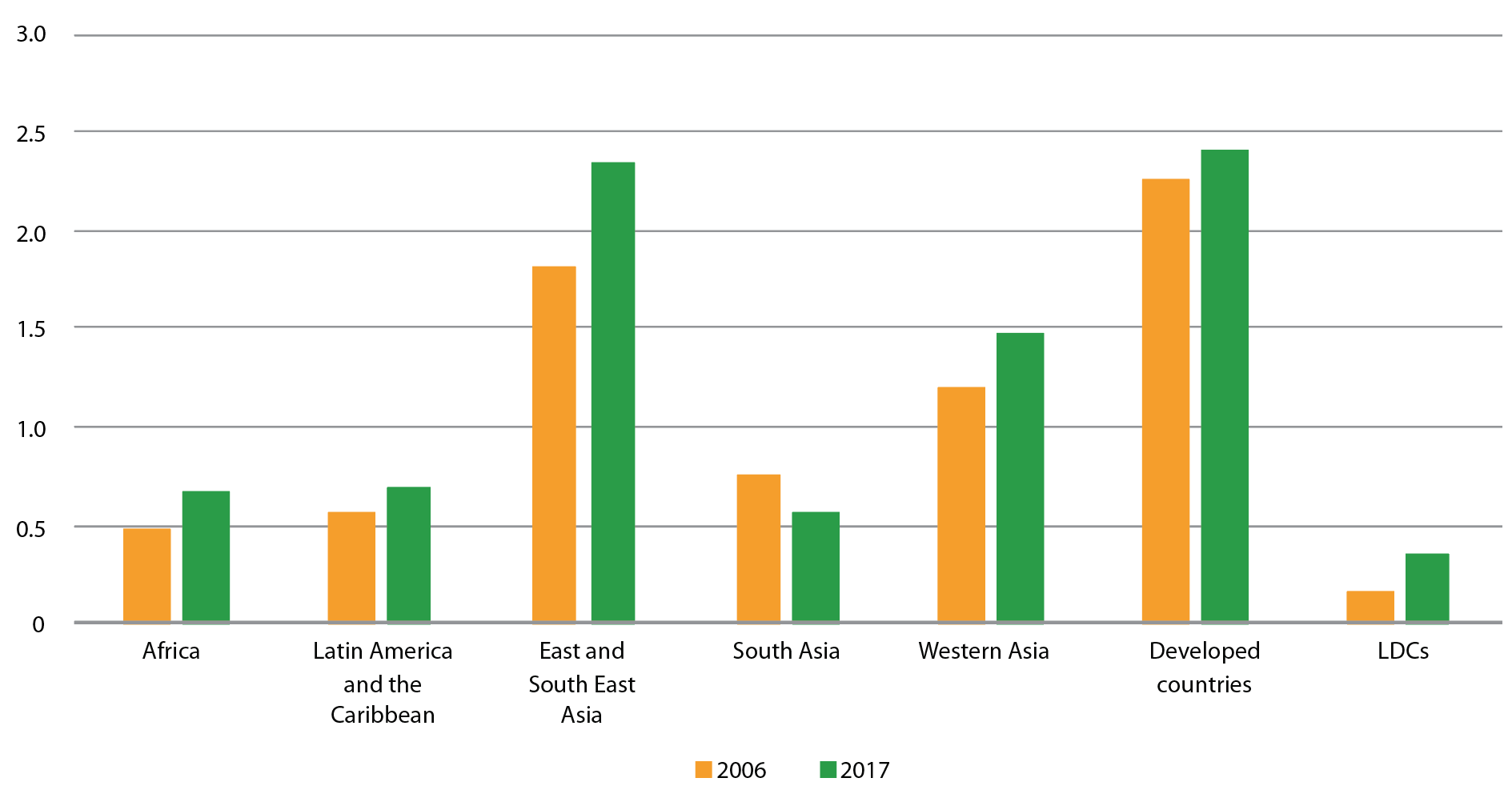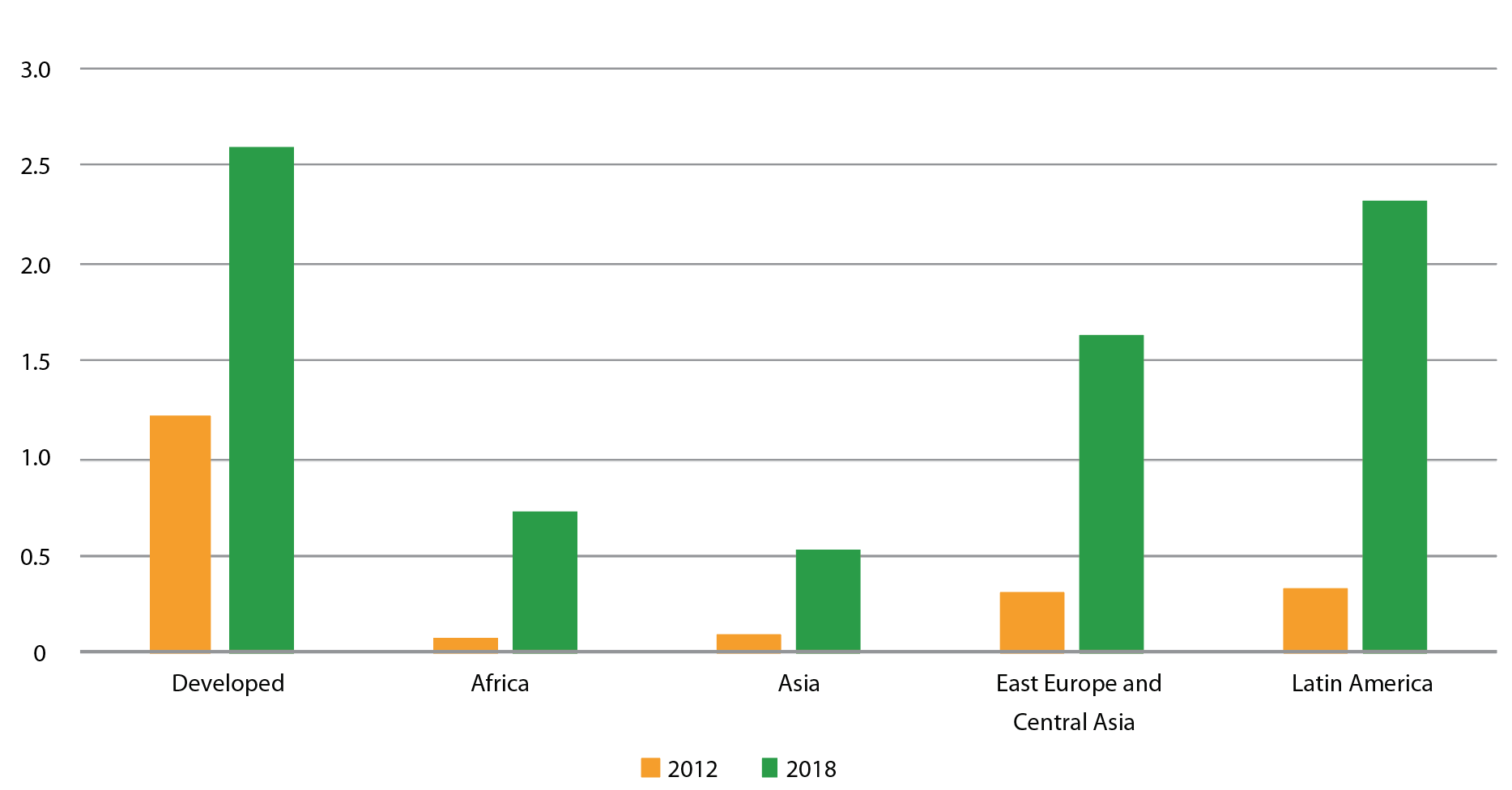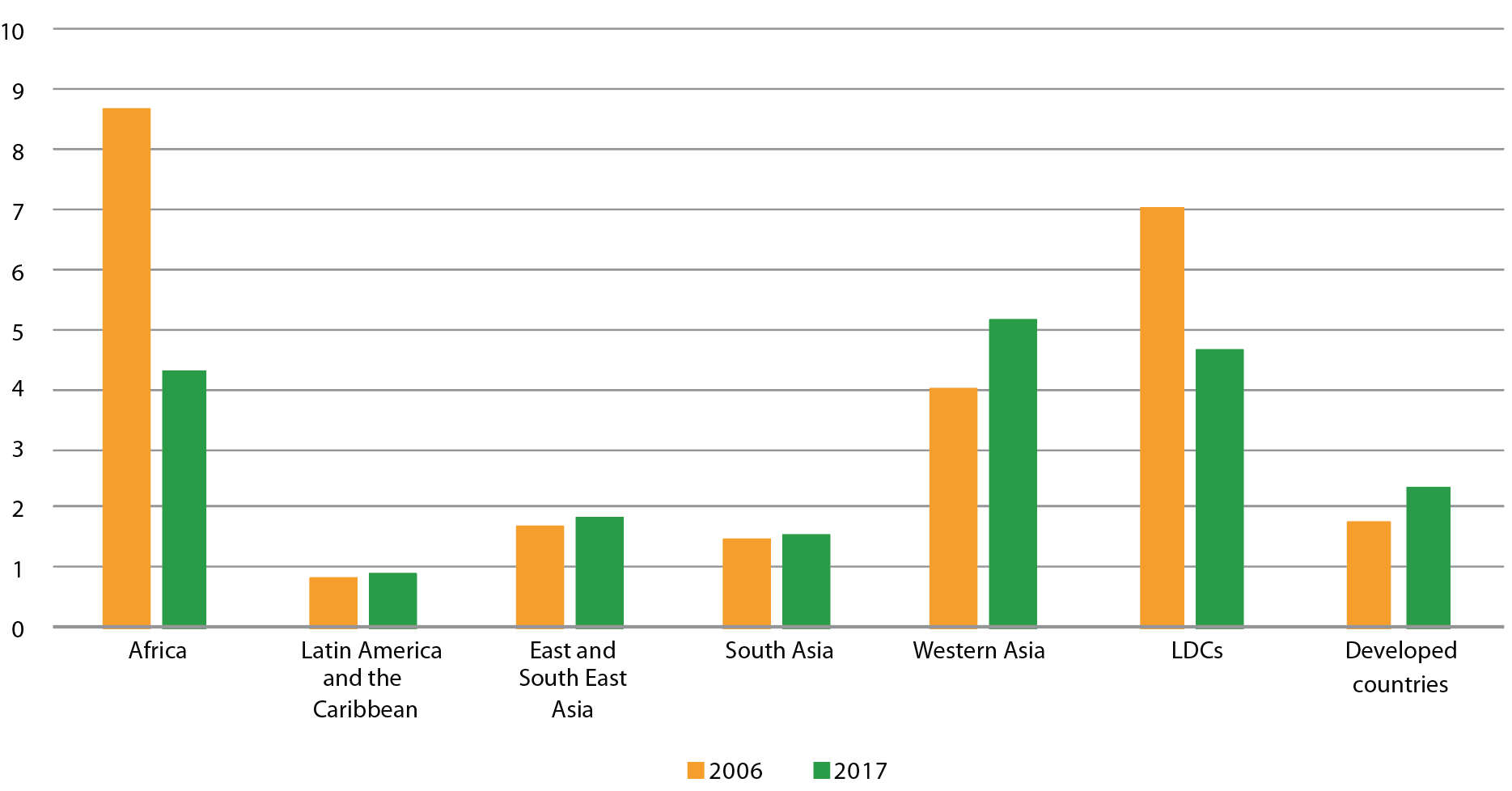Efforts to promote science, technology and innovation (STI) are related to other policy efforts, such as competition, education, investment, tax and trade policies. For instance, education policy has a major impact on university research and the availability of highly skilled labour in technology intensive firms. Education policies, the intellectual property rights (IPR) regime and a range of other policies are important contributors to an enabling environment for STI, while the international environment needs to be supportive as well.
The Addis Agenda specifically:
- Commits to enhance technical, vocational and tertiary education and training, ensuring equal access for women and girls and encouraging their participation therein, including through international cooperation
- Commits to scale up investment in science, technology, engineering and mathematics education
- Commits to enhance cooperation to strengthen tertiary education systems and aim to increase access to online education in areas related to sustainable development
- Commits to increase the number of scholarships available to students in developing countries to enrol in higher education
- Recognizes the importance of adequate, balanced and effective protection of intellectual property rights in both developed and developing countries in line with nationally defined priorities and in full respect of World Trade Organization rules
Latest developments
While enrolment rates in tertiary education are growing across the world, disparities between countries persist, and enrolment rates in LDCs (while doubling since 2006) are only a fraction of those in developing countries overall. Regionally, enrolment rates have doubled in Asia and grown by a third in Latin America and the Caribbean since 2006.
Gross enrollment rates in tertiary education, 2006 and 2017
(Percentage)

Source: UNCTAD, based on UNESCO.
Investment in research and development increased from 1.55 to 1.68 per cent of world gross domestic product (GDP) from 2006 to 2016. Outside East and Southeast Asia, however, the gap between developed and developing economies was not reduced. In South Asia, R&D spending as a share of GDP declined. The share of total R&D investment that comes from Governments (as a percentage of GDP), which historically has been an important driver of innovation, dropped slightly over the past ten years.
Research and development spending as a percentage of GDP, 2006 and 2017
(Percentage)

Source: UNCTAD, based on UNESCO.
The number of massive online open courses (MOOCs), one of the most popular methods of online education, has increased dramatically in the past few years. There is no official data on the use of online education, but enrolment figures from Coursera, the world’s leading online learning platform for higher education, show that, while enrolments are more common in developed countries, developing countries are catching up fast.
Number of registered students in Coursera per 100,000 inhabitants, by region, 2012 and 2018
(Percentage)
Source: UNCTAD, based on data provided by Coursera.
The share of tertiary students studying abroad grew significantly over the last decade. The share is highest in developed countries, but it also increased in most developing regions—except in Africa, where an exceptionally high rate of students studied abroad in 2006 and domestic university enrolment significantly expanded in the following decade.
Percentage of tertiary students abroad, by region of origin, 2006 and 2017
(Percentage)

Source: UNCTAD, based on UNESCO.
As intangible assets become more important, so does the importance of intellectual property rights regimes that aim to balance the rights and interests of the creators of knowledge with those of its users and the larger public interest. Striking this balance is becoming more difficult in the digital age, particularly because of the nature of new technologies and data as a resource; ease of cross-border transactions; and because of market concentration and market power of lead firms in core ICT sectors. There is an ongoing debate whether (and if so, how) intellectual property systems need to adapt to answer new questions—for instance, whether data can qualify for intellectual property protection, or to what extent intellectual property protections could constrain national authorities in regulating AI and other algorithms with regard to their social impacts. These questions require further study and discussion.
Read more on the latest trends by the Task Force here.
Relevant SDG indicator
- 4.3.1 Participation rate of youth and adults in formal and non-formal education and training in the previous 12 months, by sex
- 4.4.1 Proportion of youth and adults with information and communications technology (ICT) skills, by type of skill
- 4.5.1 Parity indices (female/male, rural/urban, bottom/top wealth quintile and others such as disability status, indigenous peoples and conflict-affected, as data become available) for all education indicators on this list that can be disaggregated
- 4.b.1 Volume of official development assistance flows for scholarships by sector and type of study